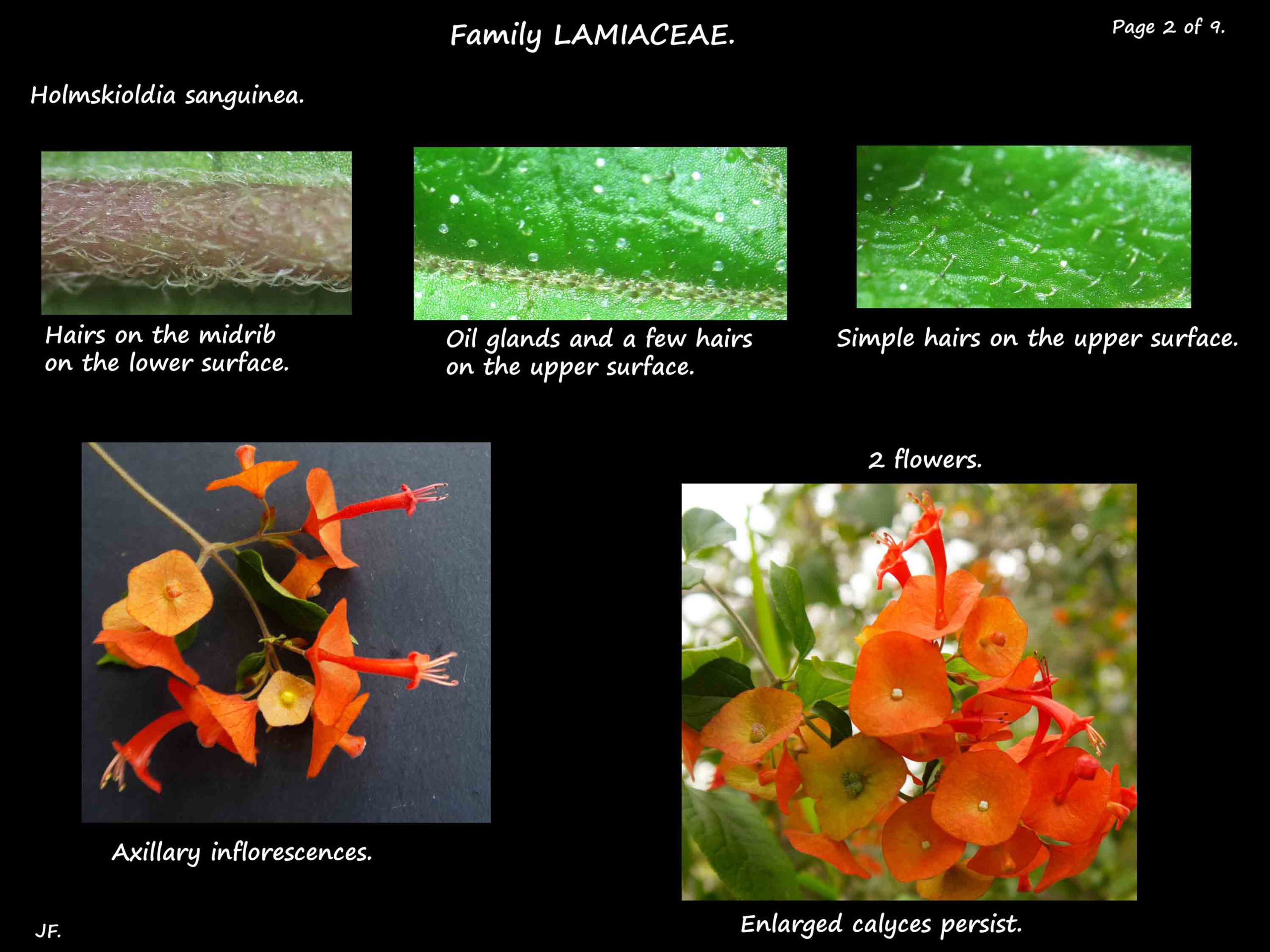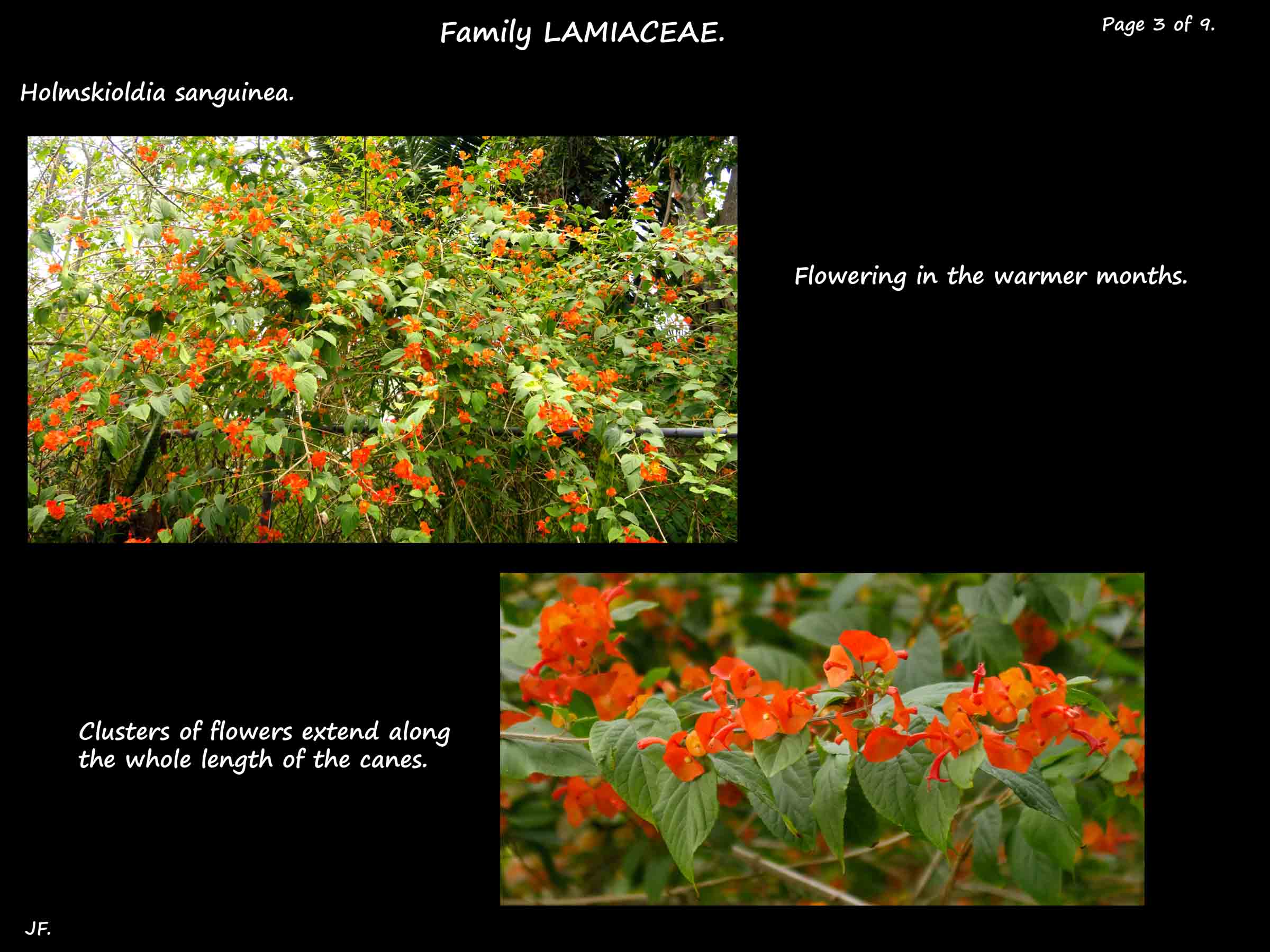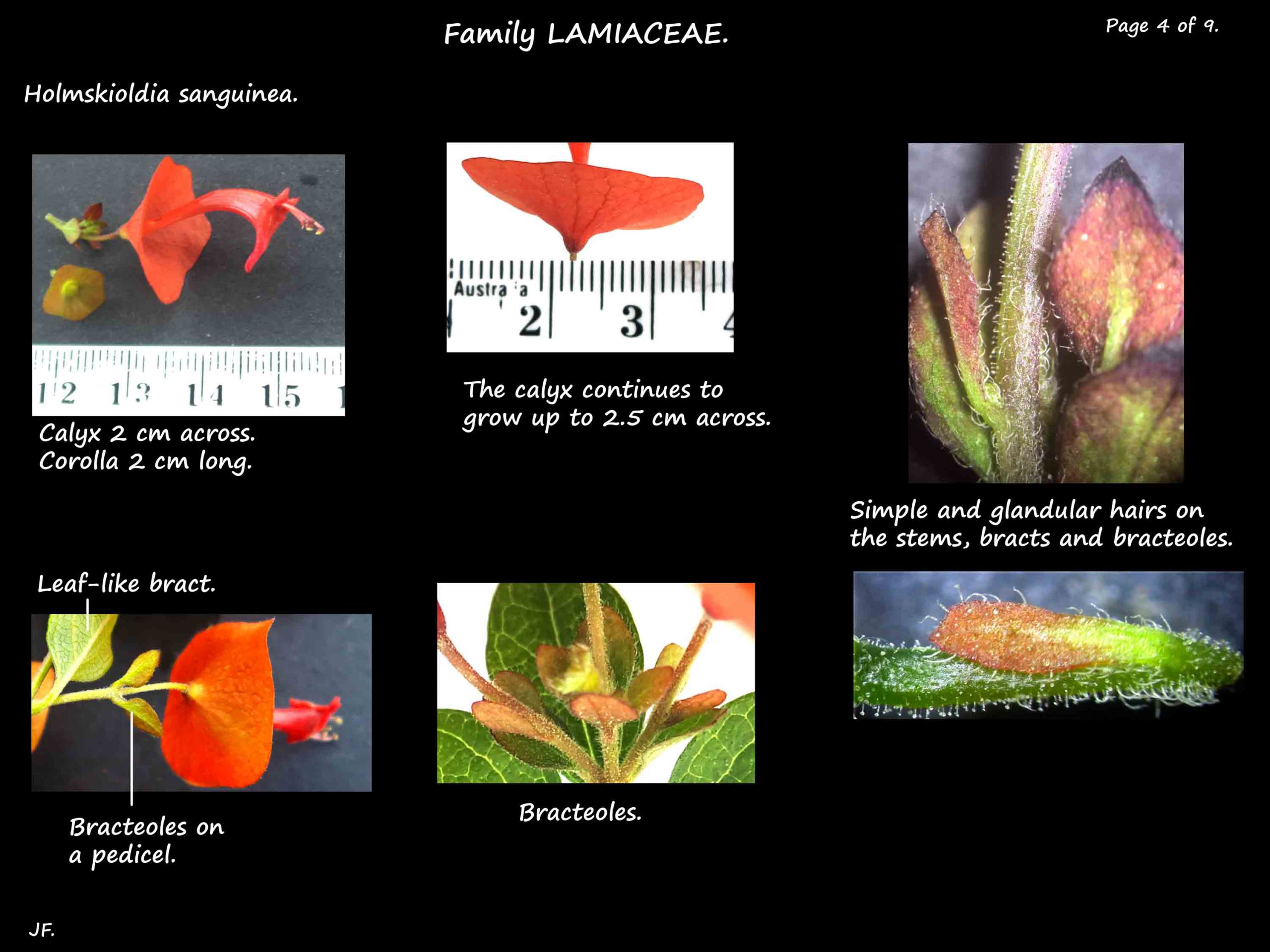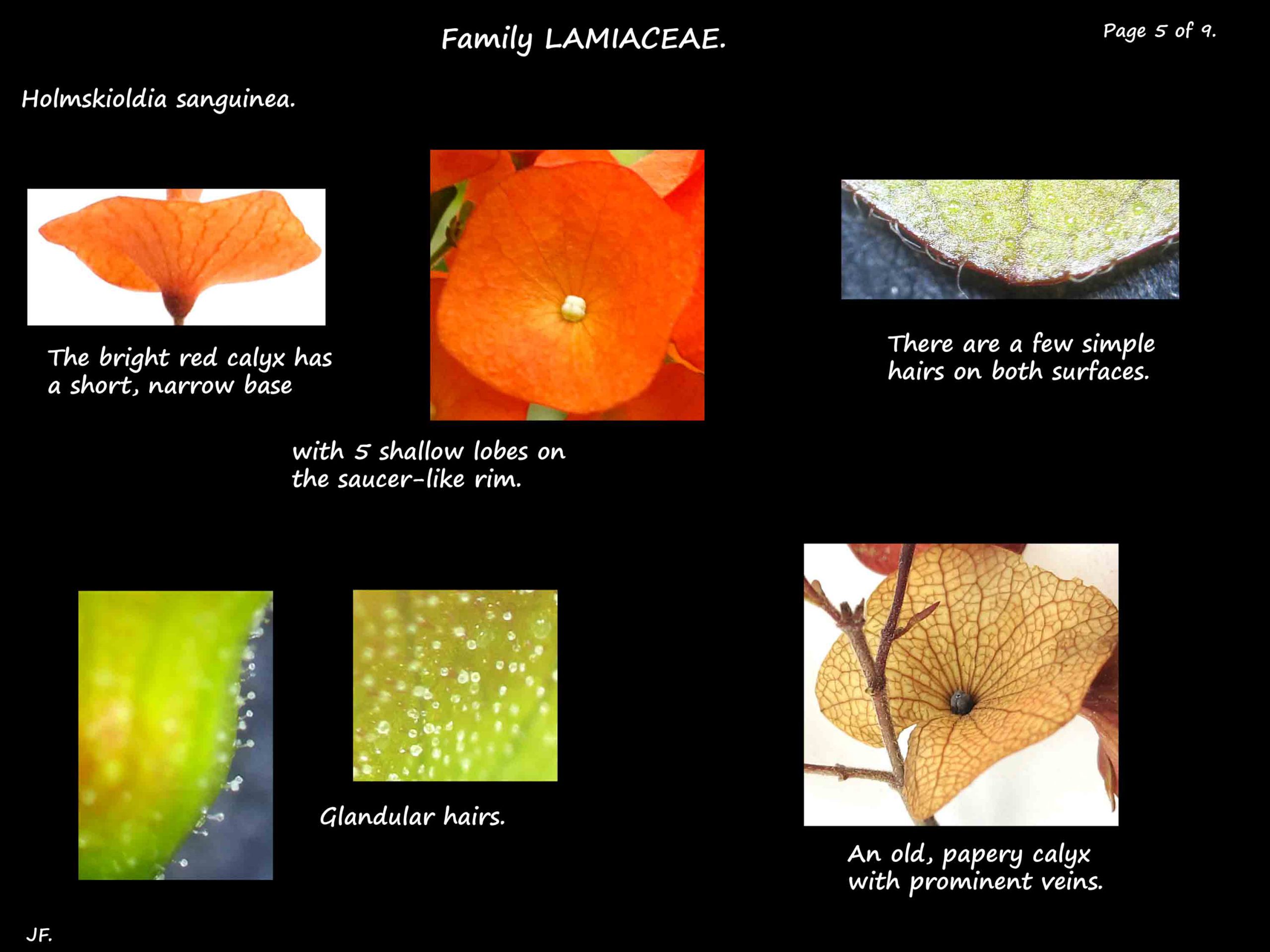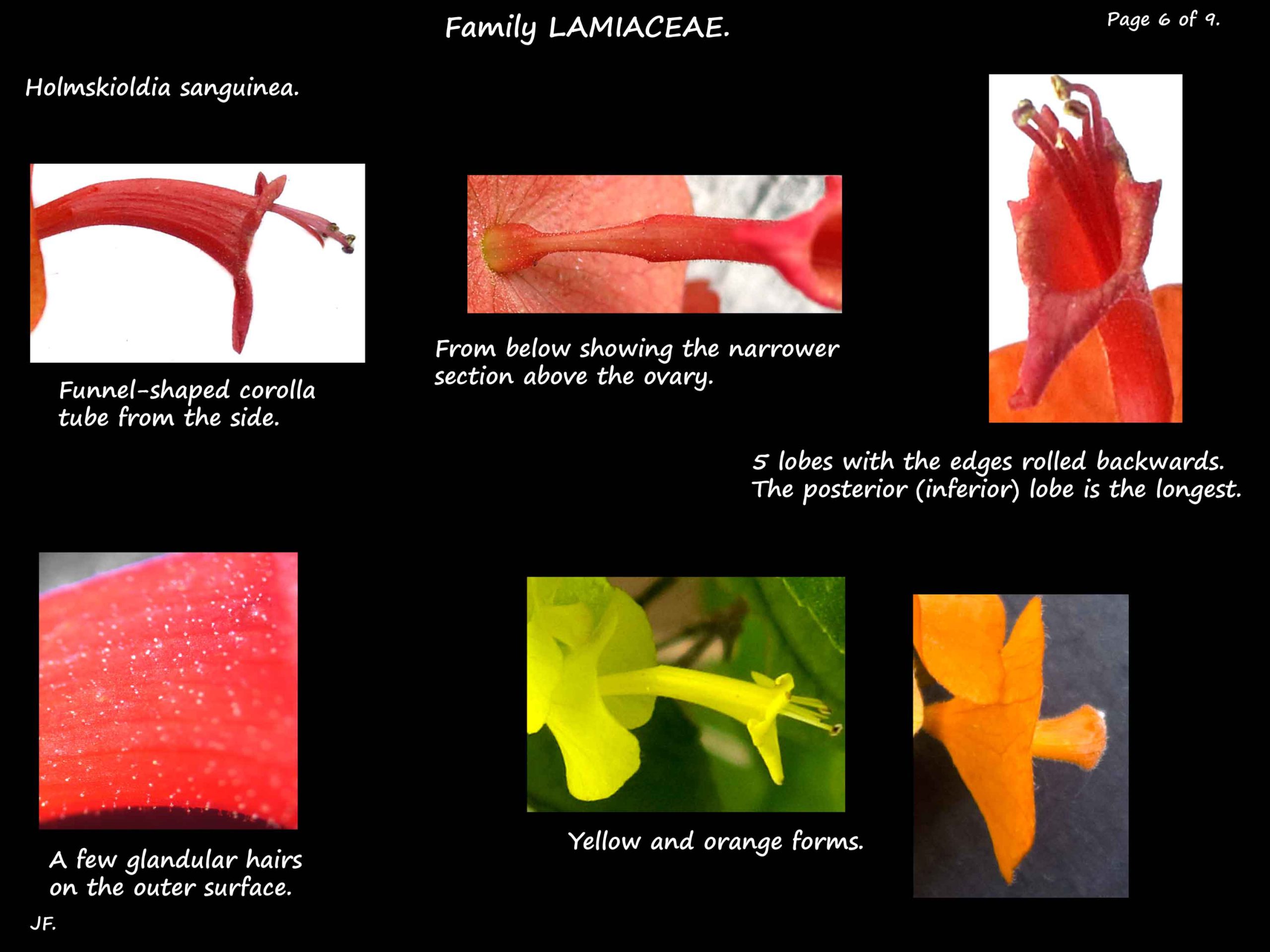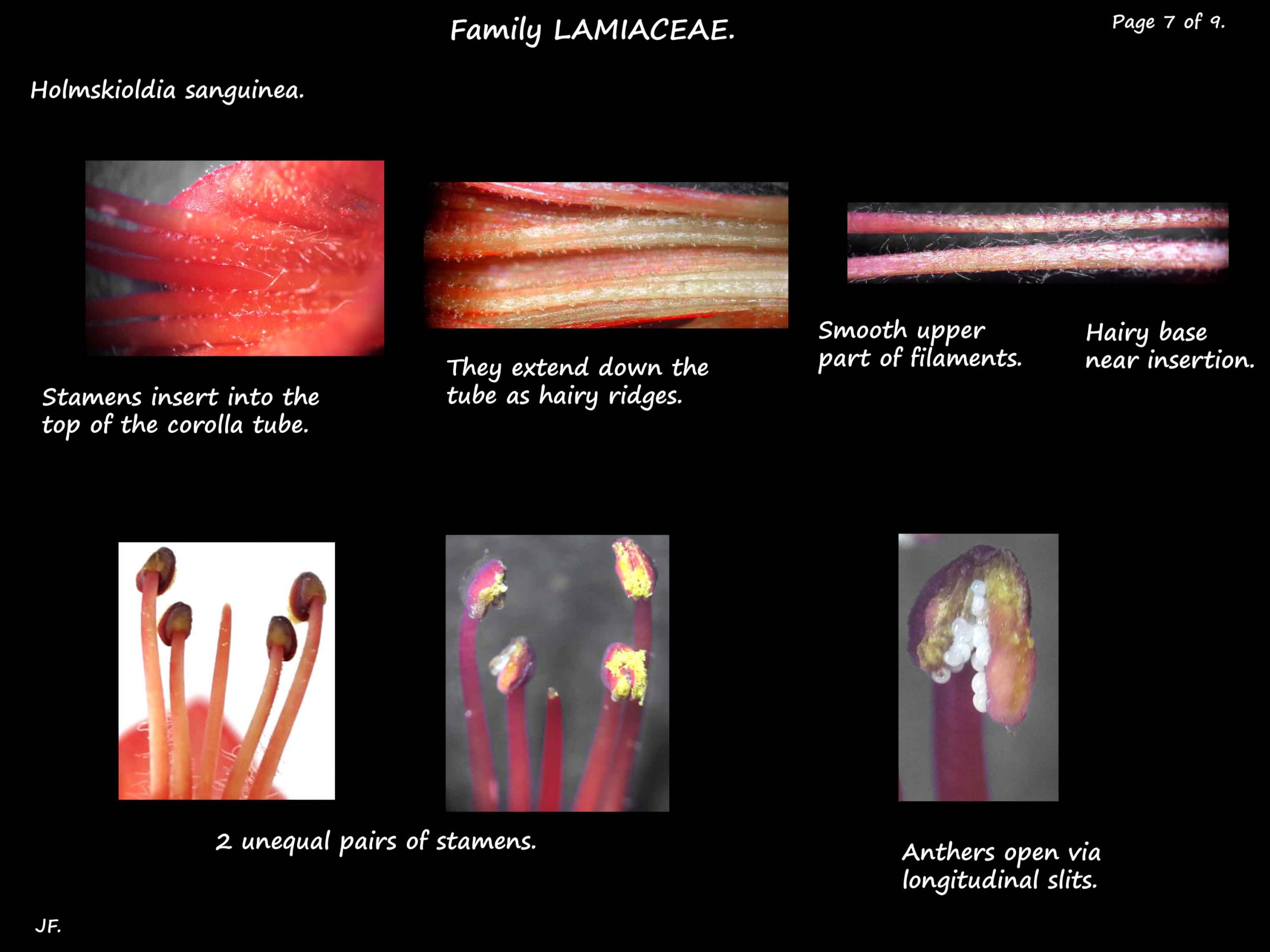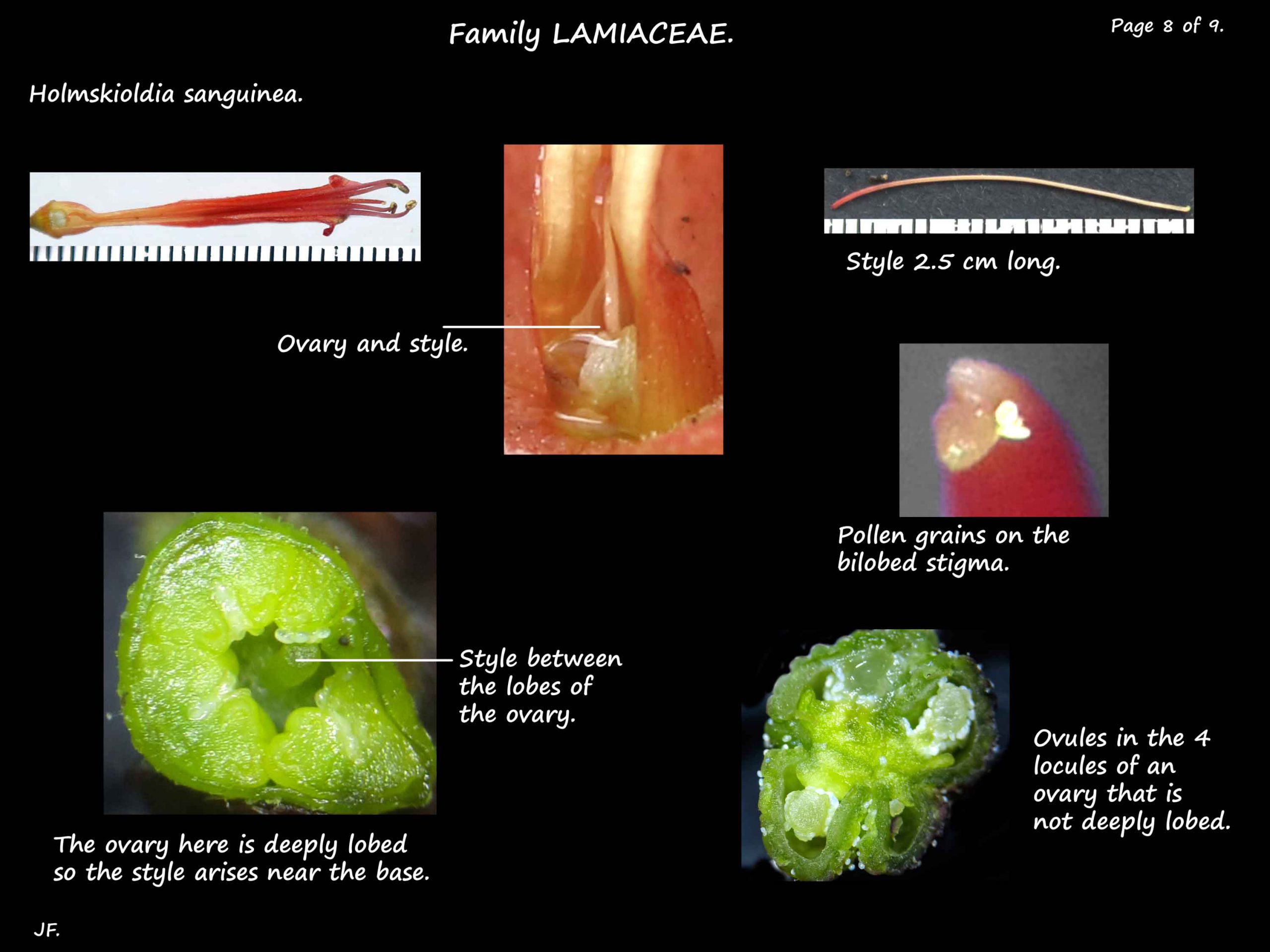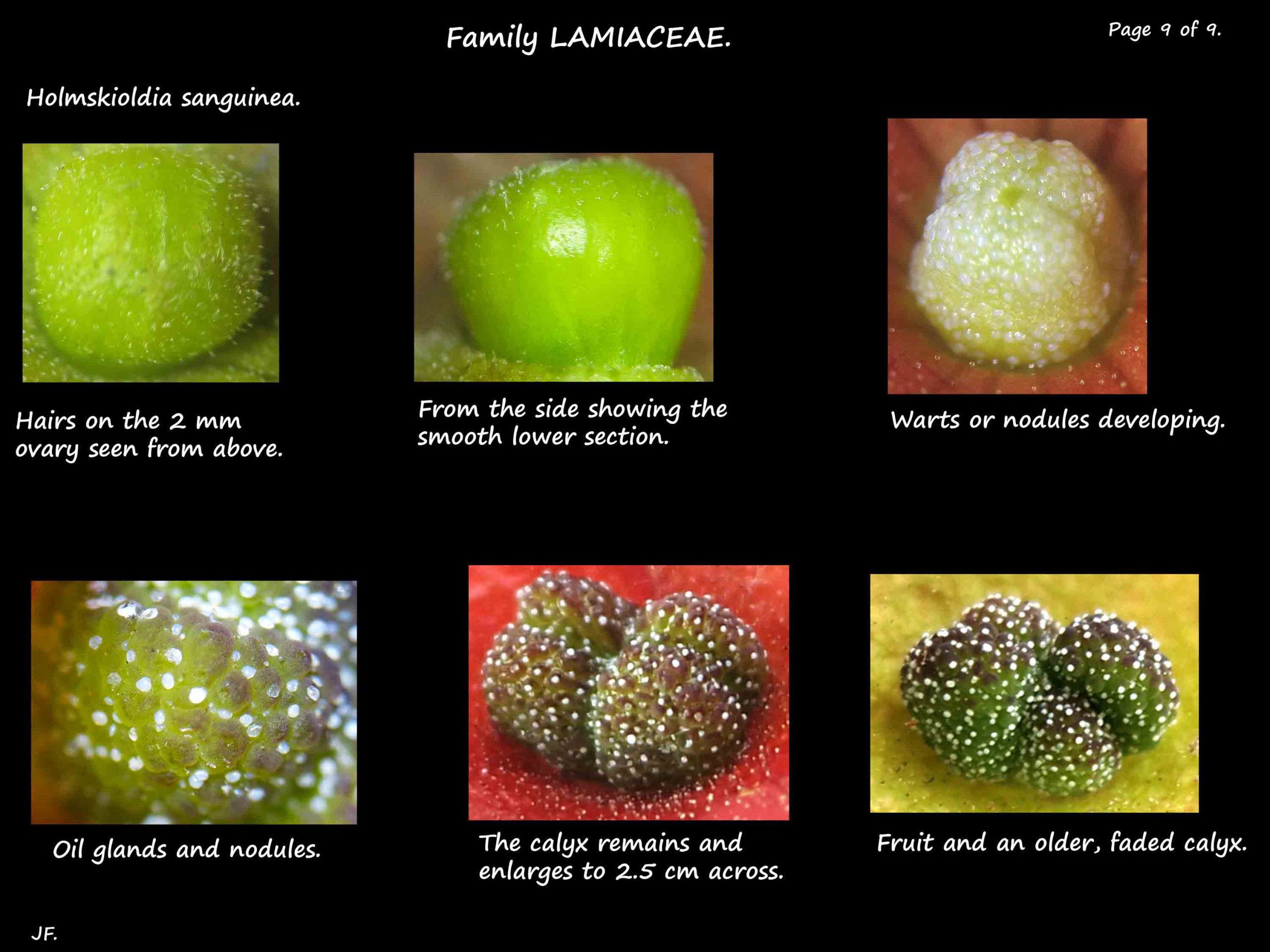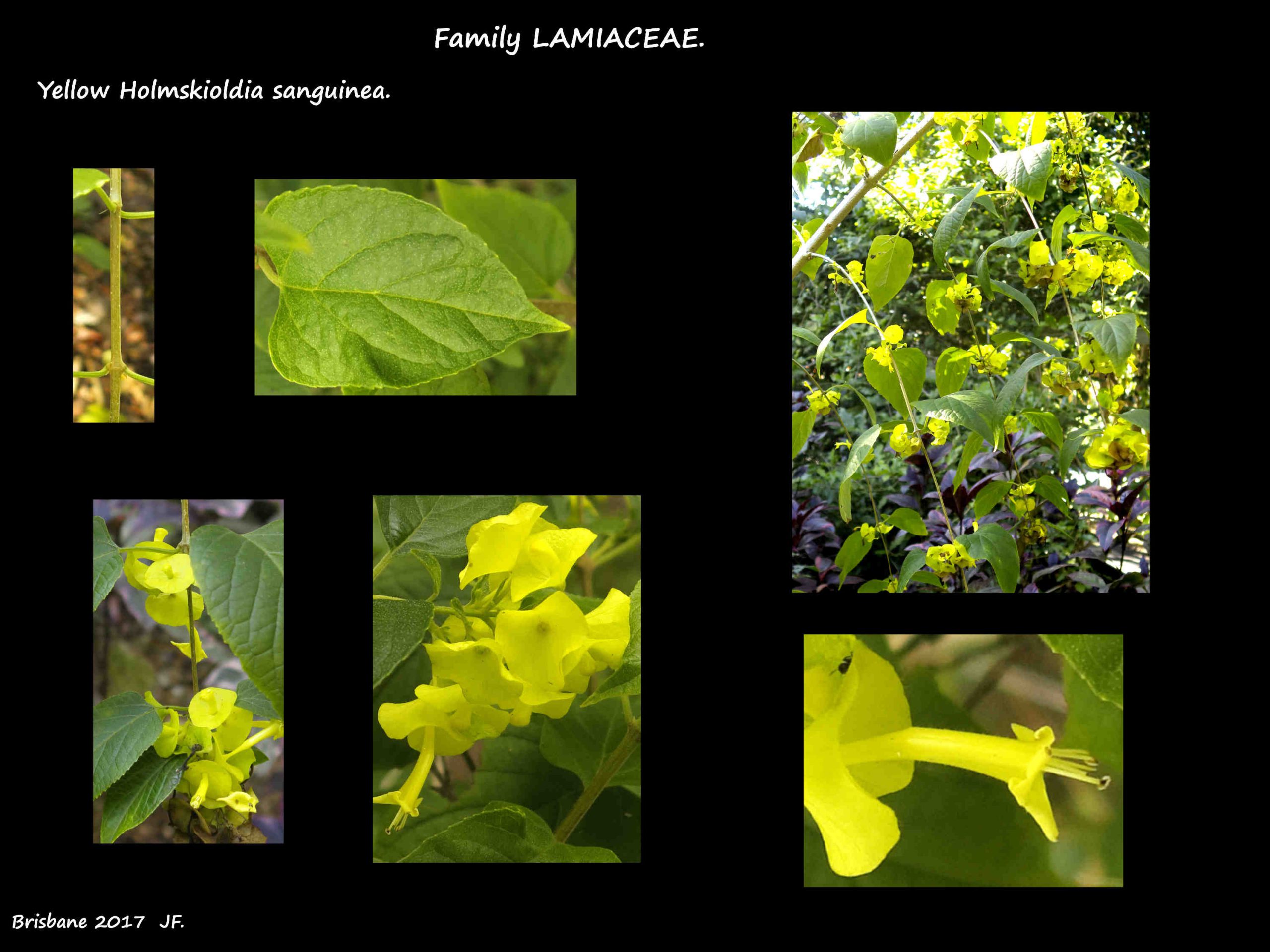Holmskioldia sanguinea.
Known as the Chinese Hat it is the only species in the Holmskioldia genus
after the others were moved to Karomia.
In Family Lamiaceae it is native to the Himalayas and is widely cultivated.
They are variable, evergreen shrubs that may form clumps.
They can grow as shrubs up to 2 m high and wide with long, thin, arching canes.
They can also grow as a taller, woody vine.
The bark is grey or brown and the smaller stems are 4 angled.
Covered in simple hairs when young the stems later become smooth.
The opposite or sub-opposite leaves are on petioles up to 3 cm long.
The ovate or wide lanceolate blades are up to 8 cm long.
The edge has small, sharp or blunt teeth and the tip is pointed.
Both surfaces can have hairs, usually sparse on the upper surface.
On the lower surface hairs can be dense and are mainly along the veins.
Inflorescences are terminal and axillary clusters around 5 cm long.
The small bracts and bracteoles have simple and glandular hairs.
The 5 fused sepals form a flattened circular or saucer-shaped calyx on a short, basal tubular section.
The calyx continues to grow as the fruit develops eventually being 2 to 2.5 cm across.
The edge has 5 shallow, blunt lobes.
The red sepals fade over time and become papery with a prominent network of veins.
There may be some small hairs on both surfaces.
The narrow, funnel-shaped corolla is around 2 cm long.
The bottom few mms is expanded to accommodate the ovary.
There are 5 pointed corolla lobes with their edges rolled backwards.
The upper 4 are around 4 mm long and the posterior or inferior lobe is longer.
The corolla, like the calyx, is typically bright red.
Externally there are some tiny hairs around the junction of the tube and lobes.
There is a yellow form seen as Holmskioldia sanguinea ‘Citrina’ and an intermediate orange one.
The 4 stamens are inserted into the top of the tube but extend down it as hairy ridges.
They are in 2 pairs of unequal length and all extend beyond the corolla.
There is a poorly defined nectiferous disc.
The 2 mm, superior ovary is usually just shallowly 4-lobed.
The surface has tiny nodules or warts and oil glands.
The style, around 2 cm long, has a small, bilobed stigma.
The 1 cm, nodular fruit is surrounded by the enlarged calyx.
It is a slightly flattened sphere and each of the 4 chambers has up to 4 seeds or nutlets.
(See also Karomia.)
J.F.


